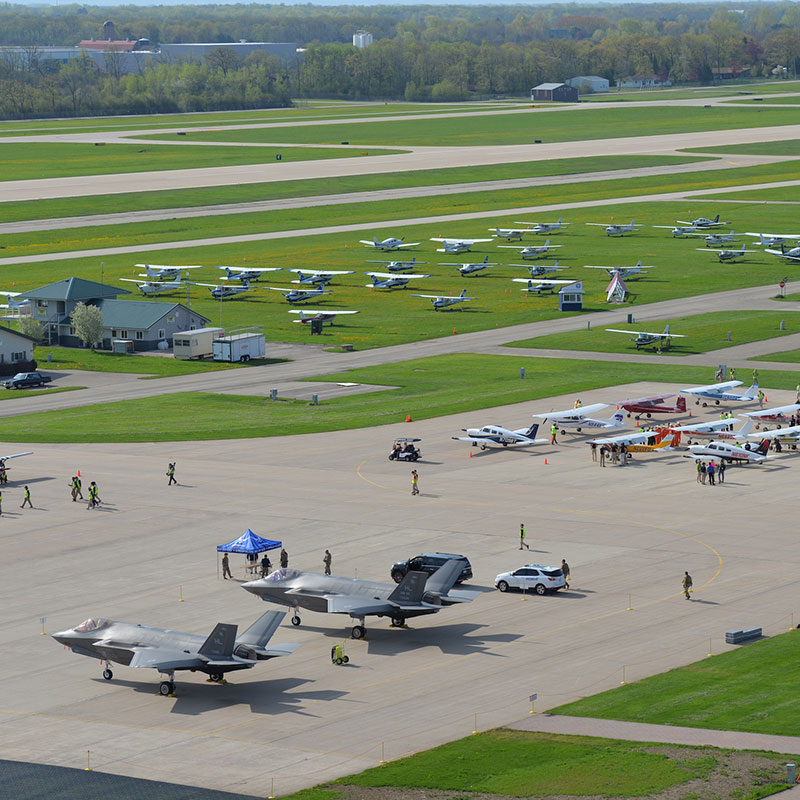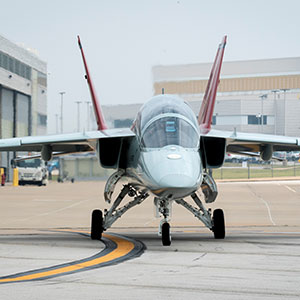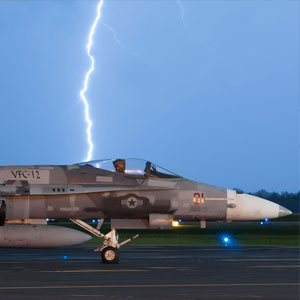Discover National Intercollegiate Flying Association Competitions
Every year, some of the nation’s best and brightest new pilots descend upon otherwise sleepy municipal airports to participate in intense flight competitions. These aren’t competitions involving daredevil stunts or high-speed passes with afterburners, and no spectators line up to enjoy the show. These are collegiate flight competitions in which aviation students harness their skills and strive to fly as precisely as possible in the name of safety. These schools act as important pipelines of talent for the program to the world of private aviation.
Sanctioned by the National Intercollegiate Flying Association (NIFA), the competitions have been taking place since 1919. In the early days, ivy-league universities such as Yale, Harvard, and Cornell competed, historical figures such as Amelia Earhart and Charles Lindbergh were involved, and the competitors flew spindly, fabric-covered aircraft. Today, students compete in modernized versions of the same events, and while the schools involved and the airplanes they use have changed, the basic concept behind the competitions has remained the same.

Collegiate aviation competitors stage their small aircraft for a precision landing event in Oshkosh, Wisconsin. The US Air Force displayed a pair of F-35 fighters in an attempt to recruit graduates.
Over seventy colleges and universities with flight programs convene every fall in nine regions across the country and participate in weeklong competitions. The top-performing schools at each regional competition then qualify for the single national competition held each spring. Schools range from small community colleges with 2-year technical programs to large universities such as Purdue, the United States Air Force Academy, and the Embry-Riddle Aeronautical University that offer advanced, postgraduate studies.
Over the course of a week, students face off in a variety of events that test their skills and performance as aviators. These range from knowledge-based events that take place on the ground such as aircraft recognition and flight planning to flying events that take place in the airplane such as precision landings and navigation. Like track and field, each competitor places and earns points individually in each event. Those points are compiled to rank the schools overall in pursuit of the coveted national championship.
Many of the ground-based events date back to the WWII era but retain legitimate usefulness today. Aircraft recognition, for example, was originally developed to help pilots and ground forces differentiate between friendly and enemy aircraft. Today, when a pilot is asked by air traffic control to follow, for example, a Mitsubishi Diamond on final approach, it is useful to know that this particular jet is outwardly identical to the Beechcraft Beechjet.

The Simulated Comprehensive Aircraft Navigation (SCAN) event was developed decades ago to test competitors on their accuracy in planning a theoretical flight over a given route. Their knowledge of aircraft performance, federal aviation regulations, weather interpretations, and other factors are evaluated and ranked. Although the subject matter has evolved over the years, the importance and applicability of this kind of knowledge are as legitimate as ever.
Other events are far more focused and specialized but indirectly build skills that are also transferable to the cockpit. It is unlikely, for example, that an airline pilot would be required to land as close as possible to a temporary chalk line on the runway, but the skills developed by doing so in small Cessnas build thorough understandings of aerodynamics and energy management. These skills will carry over to many different types of flying in a student’s career.
Similarly, the ground trainer event evaluates competitors on a very focused set of skills that transfer more broadly to the real world. In this event, competitors fly a ground-based simulator and are scored on how accurately they can fly a predetermined pattern of airspeeds, altitudes, and headings. While such patterns do not occur in real-world flying, the proficiency and accuracy required to place well in the competition benefit any pilot in virtually any type of professional flying.
Unlike many competitions, the competitors are not immediately privy to the results of their efforts. As the week progresses, all event results are kept sealed, with competitors left to wonder and predict how they performed. It’s not until the formal Saturday evening awards banquet that the competition results are announced.

This year, for the first time in NIFA’s 104-year history, the national competition took place at the Experimental Aircraft Association (EAA) headquarters in Oshkosh, Wisconsin. Home to the annual “AirVenture” fly-in, the EAA’s facilities offered ample space for students, events, and aircraft throughout the week. Its midwestern location also eased accessibility to schools based on either coast.
Among the nearly 80 colleges and universities presently involved with NIFA, 30 qualified to compete in this year’s national competition. Seeing the schools gathered at their respective areas in the general contestant hangar, the differences become apparent. While many of the smaller schools operate on a shoestring budget and are only able to bring a handful of competitors to the competition, the larger, well-funded schools arrive with upward of 30 individuals, sporting custom flight jackets and dedicated aircraft proudly painted in their school’s colors.
Knowledge and flying skill don’t discern between the various levels of funding, however. In any given event, individuals from smaller schools can and do outperform their well-funded competition. In this way, individual competitors can walk away with top-scoring trophies – but typically, only the larger schools accumulate sufficient points to earn the coveted national championship.
This year, the competition was as intense as ever. Small point spreads separated the top finishers of various events, and many were particularly competitive. In one of the precision landing events Hayden Morse from the Embry Riddle Aeronautical University – Prescott managed to land a total of only 11 feet away from the target line over the course of two landings. Averaging just over 5 feet away from the target while traveling at nearly 60 miles per hour is challenging in the best conditions, and Morse accomplished this in winds that were irregular and variable in intensity.

Ultimately, Embry Riddle Prescott walked away with the 2023 national championship trophy. The University of North Dakota, Southern Illinois University, Western Michigan University, and The Ohio State University rounded out the top five schools.
NIFA competitors commonly stay involved with the organization even after their four years of eligibility as competitors expire. They do so by continuing to work with their teams as coaches, helping to pass knowledge on to new competitors following in their footsteps. After graduation and well into their careers, many return to regional and national competitions to help conduct the events as judges. It’s not uncommon for former competitors to enjoy time together administering these events for the current crop of students as they reminisce about their own days competing.
For as quietly as NIFA and its member schools conduct their competitions, they continue their legacy of producing skilled and disciplined young pilots to supplement the workforce. These dedicated individuals are well-liked by airline recruiters in particular, who sponsor events and staff competitions with informational booths looking to capture fresh talent. And if the legacies of past competitors in the more than 100-year-old organization are any indication, the trend will continue for many years to come.





